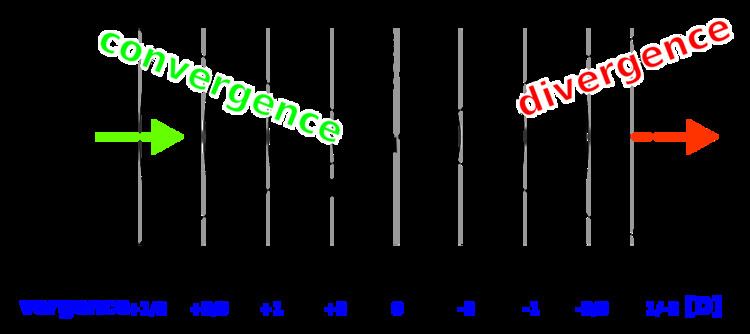 | ||
Definition
In geometrical optics, vergence describes the curvature of optical wavefronts. Vergence is defined as
Contents
where n is the medium's refractive index and r is the distance front the point source to the wavefront. Vergence is measured in units of dioptres (D) which are equivalent to m−1. However, this measure of the curvature of wavefronts is only fully valid in geometrical optics, not in Gaussian beam optics or in wave optics, where the wavefront at the focus is wavelength-dependent and the curvature is not proportional to the distance from the focus. When the distance between the point source and wavefront becomes very large, the vergence goes to zero meaning that the wavefronts are planar and no longer have any curvature.
Convergence, Divergence, and sign convention
Wavefronts propagating toward a single point yield positive vergence. This is also referred to as convergence since the wavefronts are all converging to the same point of focus. Contrarily, wavefronts propagating away from a single source point give way to negative vergence. Negative vergence is also called divergence.
